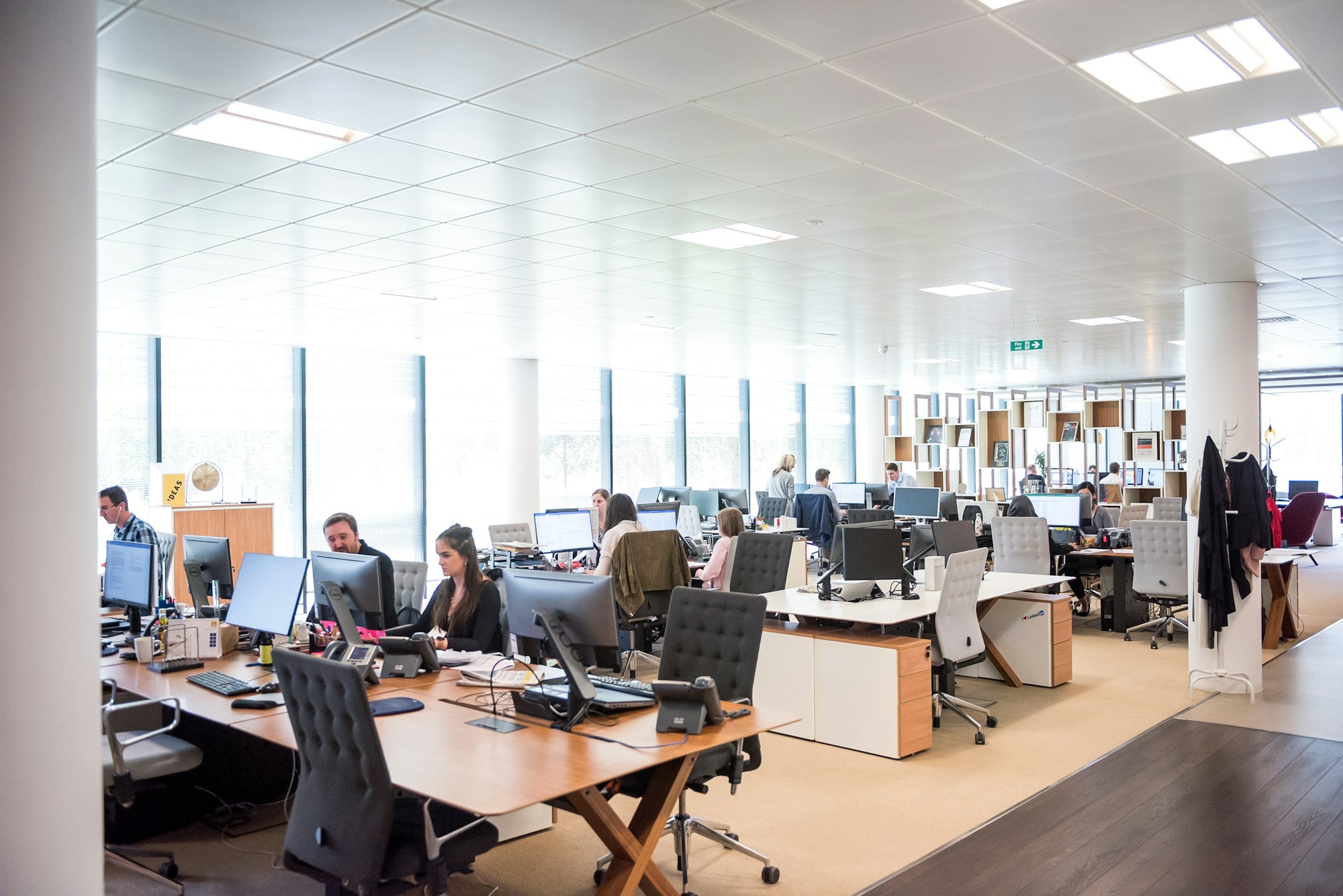Sabbatical report, week 4: Into the wild
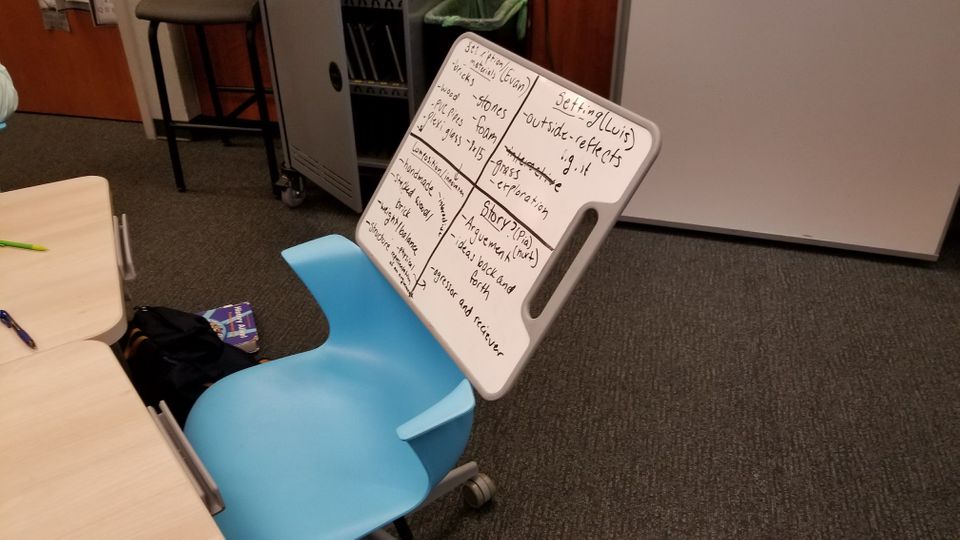
Last week was the fourth week of my sabbatical with Steelcase. Each week I've been here, there has been a different focus to the work I am doing as scholar-in-residence. This week the focus shifted from getting to know people here in the organization and how the work here gets done, to getting to know people outside the organization. Specifically, my focus this past week was to visit local area schools that have worked with Steelcase in the past and see how they are using the spaces that were created for them.
I mentioned last time that Steelcase is more of a design firm than a furniture company. Steelcase works with customers, which in the Steelcase EDU case are schools, to ascertain their needs and then designs spaces around those needs. This involves more than just furniture. It also involves the flow of the space, its layout, the arrangements of whiteboards, access to technology, and more. The idea is that the design and the furniture help to solve some kind of pedagogical problem, usually involving how best to implement active learning in a classroom space.
My job this past week was to visit two local high schools to see for myself just how these spaces were designed and how they are being used, with real-live students in a real-live class setting.
West Michigan Aviation Academy
West Michigan Aviation Academy (WMAA) is a public charter high school located on the grounds of the Gerald R. Ford International Airport here in Grand Rapids. It has a STEM focus to its curriculum (and yes, the students do learn how to fly airplanes) and has a lot of Steelcase spaces and furniture installed in the building. I came out on Tuesday of last week to observe three different classes: A Spanish class, an AP Calculus class, and a drafting class.
The Spanish class met in a room with several Steelcase Verb tables arranged in a kind of double-U pattern with Node chairs around the outsides, like this:
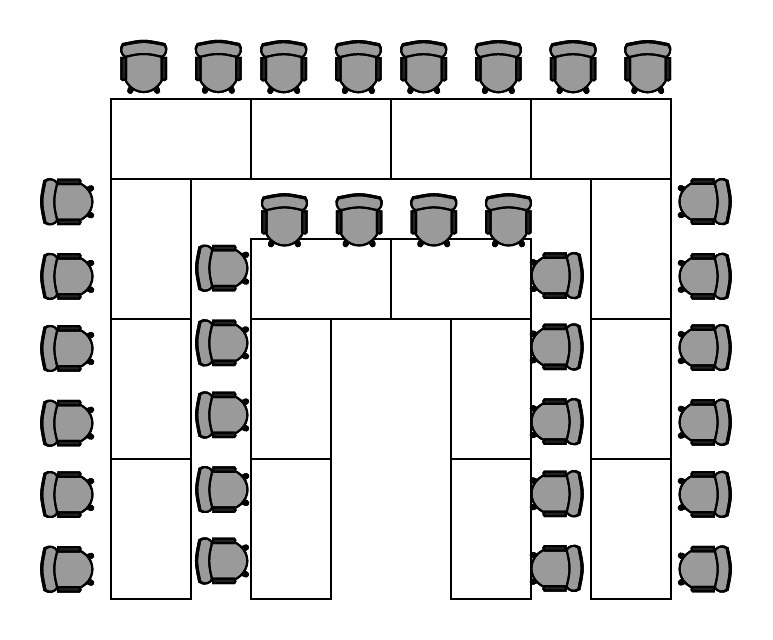
Students in the inner "U" would pivot around in their chairs and work with the people behind them in the outer "U". The desks themselves are made to be easily movable but they were never moved around, nor did they need to be moved around.
I was really impressed by the fact that the teacher had the students working actively the entire time except for a brief time when she debriefed a vocabulary exercise (and even that debrief was active) with no loss of attention in the students. The kids were into what they were doing and working hard. And this space is a fairly simple space to set up; honestly, it used Steelcase furniture but it didn't need to. The main aspect of the space that made this work was the fact that the chairs had wheels on them and could swivel. Had the same activities been deployed in a classroom where the seats were fixed or hard to move, it wouldn't have worked as well.
Next up was an AP Calculus class that had a very different arrangement. The learning space here was a square with no tables in it at all except for one or two around the perimeter of the room, used for stashing handouts. Instead there were about 30 Node chairs more or less randomly arranged:
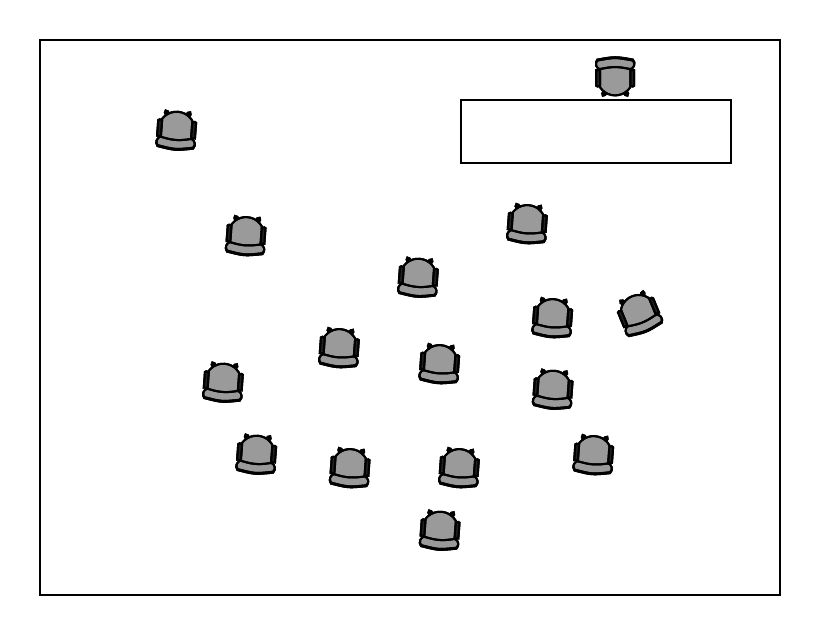
(There were about twice as many chairs in the room than I felt like drawing here.) In the front of the room is a long desk where the instructor sat. The teacher in this class lectured for most of the time I was there, all but about 8 minutes. They were learning the chain rule and he presented examples of how it worked. The remaining 8 minutes were given to students to work in groups on chain rule exercises. So this was a much less active class than the Spanish class. What stood out to me about this class was that students never moved their chairs around, even though they had wheels and there were no barriers for moving around. A lot of instructors I know who have seen chairs with wheels on them are afraid that students will start screwing around with them --- launching themselves across the room and so on --- but honestly, I didn't see that happen all day.
The final class I visited was a drafting class --- a gloriously old-school drafting class. There is no CAD software used in the class, in fact no technology at all aside from mechanical pencils. The teacher of the class says that using analog tools helps students learn accuracy, simplicity, neatness, and a better feel for scale. The students were working on a project where they were to design and draft up the floor plans for a three-bedroom house.
The class met in a large maker space. It was a rectangular room that held enough tables to seat 52 students, although there were only 12 in the class. In the back was a fabrication lab, including an entire wall of high-quality 3D printers whirring away on student projects from another class --- probably over $100,000 worth of printing technology. Meanwhile the students in the front of the space were there, carefully lettering their floor plans and drawing in designs with a T-square and a french curve.
I absolutely loved the combination of digital and analog in that space and in the class. This is a feature of effective active learning that I've been noticing more and more: When students are using both digital and analog tools, it seems to lead to more engaging experience and learning just seems to work better. At times, I think I have been on such a crusade to digitize all the things that I've forgotten the power of analog. More on that in another post.
WMAA showed me some highly effective uses of active learning in three very different spaces. When you put these pedagogies in the hands of skilled teachers and support them with spaces that help them do their work --- or at least don't get in the way --- then good things happen.
Forest Hills Eastern
Eastern High School is another public high school (not a charter) in the Forest Hills area of Grand Rapids. I was hosted there on Thursday last week to observe a combined US History/American Literature class. This is one of several "block" classes that consist of two related courses stuck together than meet for two hours. So it takes up the same time as a history class followed by an English class, but the idea is that it's not two classes but one class that blurs the lines between the disciplines.
This particular class was team-taught by a history teacher and an English teacher, along with a teaching aide, and had 42 students in it. It met in a "classroom" that was actually two classrooms with a movable partition separating them, that was rolled back out of the way. So, it's a big class meeting in a big space. For college instructors, this may sound familiar. The class was laid out with pairs of Verb tables pushed together, with four Nodes at each, like this:
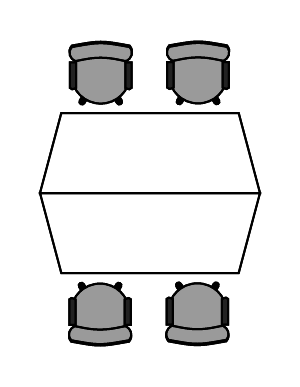
So imagine this little pod of students, and then there were 13 of these pods in the space. Each of the Verbs comes with a little whiteboard that can mount on the sides or in the middle of the table, so students can each have their own whiteboard. (In this lesson it was one whiteboard per team.)
The students had attended ArtPrize in Grand Rapids the previous day, and their job on Thursday was to work on a presentation that explored the idea of innovation, by studying a particular ArtPrize piece and telling its story. (I asked the teachers how this could be interpreted as teaching history or English, and they showed me how the parameters of the assignment addressed some of the core learning objectives of the class.) Through most of the two hours, students were working on their presentation using a design thinking template --- by sharing what they had observed at ArtPrize (discovery), outlining their presentation (incubation) and then designing the slides for their presentation (ideation). The teachers were quite explicit about the design thinking aspect of the assignment, which I liked.
A few things stood out to me about my visit to the class. First, I saw the combination of digital and analog used effectively. Student teams started the design process by using the whiteboards to write out their ideas and their plans; they also used sticky notes to attach thoughts and ideas to the whiteboard. Then they could put the whiteboard put for the whole group to see, like this:

I thought about this later and realized that although you could replicate this ideation process using purely digital tools --- for example a shared Google doc where people could add and move text around --- none of the digital tools I could think of would work nearly as well as a plain whiteboard and sticky notes. Every kid had a computer, either their own or a Chromebook from a cart that lives in the classroom, so access isn't an issue; it's just that analog tools are simpler and require no fuss, and are therefore less in the way of ideation. Analog tools do exactly what you tell them to the first time, with no setup, no internet issues, no battery issues. By starting the process with analog and then moving to digital (Google Slides) when it made sense, the workflow was a lot more natural, choosing the tool to fit the job.
Another thing that struck me about this class was how the kids were able stay active nearly the entire time. This was a class full of 42 squirrelly teenagers working on a project involving art, writing, and speaking --- not exactly a recipe for sustained engagement. And yet, despite a few kids who were predictably messing around, the students stayed on task the entire time and made significant headway. I went around to the groups and asked them what they were doing and why, and every group I talked to could articulate not only the goals of their work but the reasons why they were doing it in the way they were doing it. Impressive.
What stands out to me about my visit to FHE is that you can pull off effective active learning even when you have a long class, or a large-ish class, or a class full of students who honestly would probably rather be somewhere else. None of these things --- class time, class size, student motivation --- is an insurmountable barrier to active learning and real engagement. It just takes good design of the instructional task and it helps to have good design of the learning space.
Look ahead to week 5
This week (week 5) is again going to be different. I'm mostly unscheduled this week which means I'll be digging more deeply into reading some research literature, especially literature on learning spaces. I'll also be doing an AMA session with some sales representatives on Thursday --- as I mentioned before, communicating what I am about to different groups with different agendas has been one of the more interesting and challenging things about this sabbatical so far.

